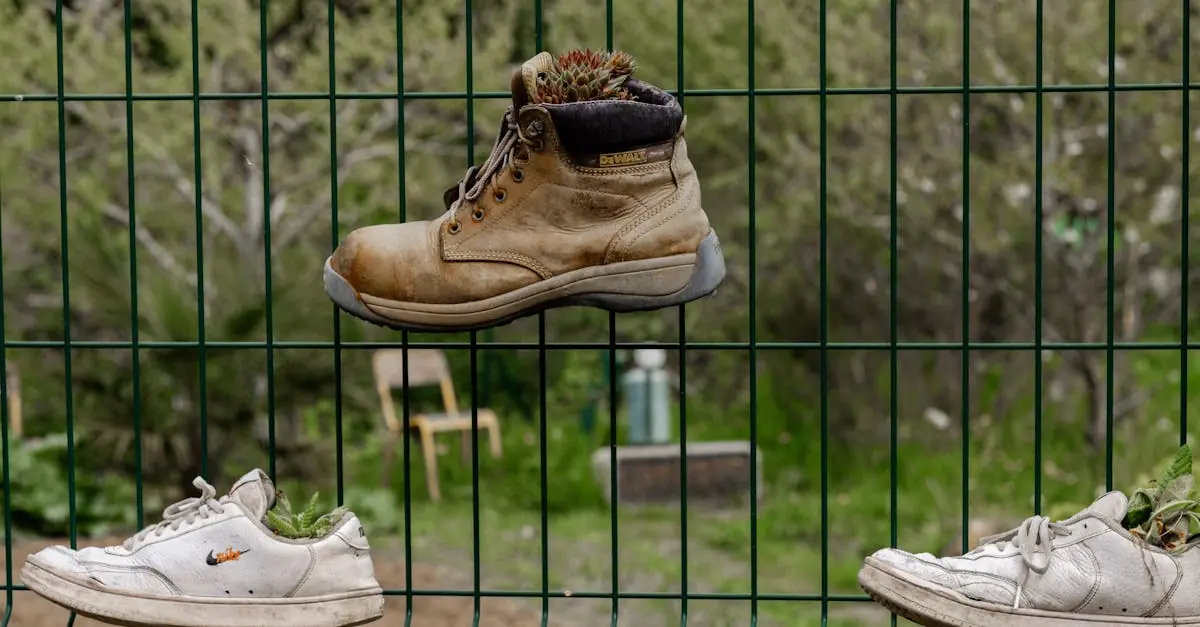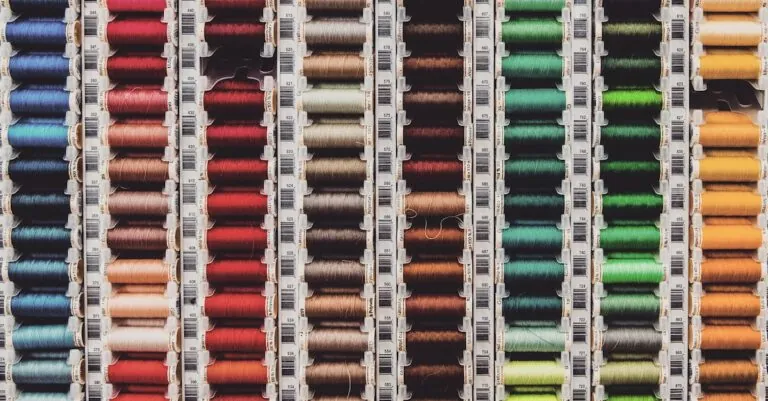Table of Contents
ToggleImagine transforming your backyard into a vibrant oasis with just a sprinkle of creativity and a dash of elbow grease. Homemade garden planters aren’t just a practical solution for your green thumb; they’re a canvas for expressing your personality. Whether you’re a seasoned gardener or just starting out, crafting your own planters can be as satisfying as finding the last piece of chocolate in the fridge.
Benefits Of Homemade Garden Planters
Homemade garden planters offer versatility for various gardening styles. Creating unique designs allows individuals to express creativity through their garden aesthetics. Customization enables gardeners to choose materials that match their outdoor spaces. Many materials commonly used include wood, metal, and recycled containers.
Cost-effectiveness significantly enhances the appeal of homemade planters. Using reclaimed materials or items available at home reduces the overall expenses associated with gardening. Gardeners save money while contributing to environmental sustainability.
Durability often increases when selecting high-quality materials. Homemade planters can withstand weather elements better than some commercially available options. Properly constructed planters prevent rotting or rusting, extending their lifespan.
Improved drainage stands as a critical advantage of personalized planters. Gardeners can design drainage holes to suit specific plants, promoting healthy root growth. Enhanced airflow within the soil enhances plant health and longevity.
Accessibility comes into play with homemade designs. Individuals can create planters at any height, making gardening more comfortable. Elevated planters are especially beneficial for those with mobility challenges.
Satisfaction derived from crafting planters adds to the overall gardening experience. Completing a DIY project fosters a sense of accomplishment. The opportunity to nurture plants in handmade containers deepens the connection to nature.
Community involvement also manifests through homemade garden planters. Sharing plans and ideas can inspire local gardening groups or neighbors. Collaborative projects can strengthen community bonds while beautifying shared spaces.
Types Of Homemade Garden Planters
Homemade garden planters come in various types, each offering unique benefits and aesthetics.
Wooden Planters
Wooden planters create a rustic charm in any garden. They can be crafted from cedar, redwood, or repurposed pallets. Durable woods resist rot and pests, making them ideal for outdoor use. These planters can be shaped into raised beds or simple boxes to suit specific gardening needs. Paint or stain can enhance the appearance, providing additional protection against moisture. Proper drainage holes ensure plants thrive, while height adjustments suit the gardener’s comfort.
Concrete Planters
Concrete planters provide exceptional strength and stability. They can withstand various weather conditions, ensuring longevity. A mixture of cement, sand, and gravel allows for creative shapes and designs. These planters retain moisture, reducing the frequency of watering. Adding color or texture during mixing enhances visual appeal. Although initially heavier, their weight prevents tipping, accommodating larger plants or small trees.
Recycled Material Planters
Recycled material planters promote sustainability and creativity. Old tires, crates, or containers transform into unique plant holders. These materials often require minimal preparation, allowing for quick assembly. Creativity flourishes with varied textures and colors, attracting attention in any garden. Additionally, using reclaimed materials reduces waste and saves money. Successful examples include tin cans, plastic bottles, or wooden boxes, all contributing to a personalized gardening experience.
Essential Tools And Materials
Gathering the right tools and materials simplifies the process of creating homemade garden planters. This section outlines necessary equipment and material recommendations for effective planter construction.
Tools You Will Need
- A saw serves to cut wood or other materials to the desired size.
- Drill helps with creating drainage holes for proper moisture management.
- Measuring tape ensures accurate dimensions for planters.
- Sandpaper smooths edges for safety and aesthetics.
- Paintbrush enables the application of protective finishes or paints.
- Safety goggles protect eyes during cutting and drilling tasks.
Recommended Materials
- Cedar wood offers natural resistance to rot and insects, making it durable for outdoor use.
- Concrete provides a strong base and retains moisture, ideal for sizable plants.
- Recycled plastics promote sustainability and can be easily shaped into custom designs.
- Natural fiber, like jute or burlap, aids in drainage and supports root health.
- Landscape fabric prevents soil erosion while keeping planters stable.
Step-By-Step Guide To Building Homemade Garden Planters
Creating garden planters requires careful planning and precise assembly. This section provides essential steps to ensure a successful project.
Planning Your Design
First, determine the planter size. Consider the space available and the types of plants intended for growth. Sketch a design that incorporates height, width, and depth. Choose materials that complement the overall outdoor aesthetic. Select durable options like cedar or concrete for long-lasting use. Consider drainage needs for the specific plants. Elevated planters can enhance accessibility, especially for individuals with mobility concerns. Personal creativity shines through by integrating unique features, such as built-in trellises or integrated saucers.
Assembly Instructions
Gather the tools before starting assembly. Begin by cutting the materials according to the design specifications. Create drainage holes in the bottom using a drill to ensure proper water flow. Smooth edges with sandpaper for safety and aesthetics. Next, attach the sides using screws or wood glue, depending on the chosen materials. Ensure all connections are secure. Add a layer of landscape fabric at the bottom to prevent soil erosion while allowing drainage. Fill the planter with quality soil and arrange the selected plants. Maintain organization and check alignment during assembly for optimal results.
Tips For Maintaining Your Planters
Maintaining homemade garden planters ensures longevity and healthy plants. Regularly check soil moisture levels, adjusting as needed for plant requirements. Inspect plants for signs of pests or disease, treating immediately to prevent spread.
Consider rotating plant selections each season to enhance soil nutrient balance. Fertilize with organic options tailored to specific plant needs, promoting growth without harmful chemicals. Pruning dead or overgrown foliage encourages airflow, reducing disease risk.
Cleaning planters at the beginning of each season eliminates debris and pests. Use a mild soap solution when scrubbing surfaces, ensuring no residue remains. Empty planters before winter, preventing damage from freezing conditions.
Drainage plays a crucial role in planter health. Always ensure drainage holes remain clear of blockages, allowing excess water to escape. Adding gravel or small stones at the bottom of planters improves drainage and air circulation.
Consider grouping planters according to sun exposure and moisture needs. This method maximizes plant health and minimizes maintenance effort. Using mulch on topsoil helps retain moisture, reducing watering frequency and weeds.
Monitor environmental conditions, adjusting planter locations when necessary. Seasonal changes in sunlight can affect plant growth, so being flexible with positioning maximizes health. Adapting to weather variations, such as moving planters during heavy rain, can prevent waterlogged roots.
Engaging with local gardening communities, whether online or in-person, provides valuable insights. Sharing experiences fosters a supportive environment, allowing for shared maintenance tips and plant care strategies. Embracing these best practices ensures that homemade garden planters remain a vibrant and productive part of the garden.
Homemade garden planters offer a unique blend of creativity and practicality that can transform any outdoor space. By crafting personalized planters, individuals not only enhance their gardening experience but also contribute to sustainability. The ability to customize designs and materials ensures that each planter reflects personal style while meeting specific plant needs.
Engaging in DIY projects fosters a sense of accomplishment and can even spark connections within local gardening communities. As gardeners nurture their homemade creations, they cultivate not just plants but also a deeper appreciation for the art of gardening. Embracing the journey of building and maintaining these planters can lead to a flourishing garden that brings joy and beauty to any backyard oasis.




